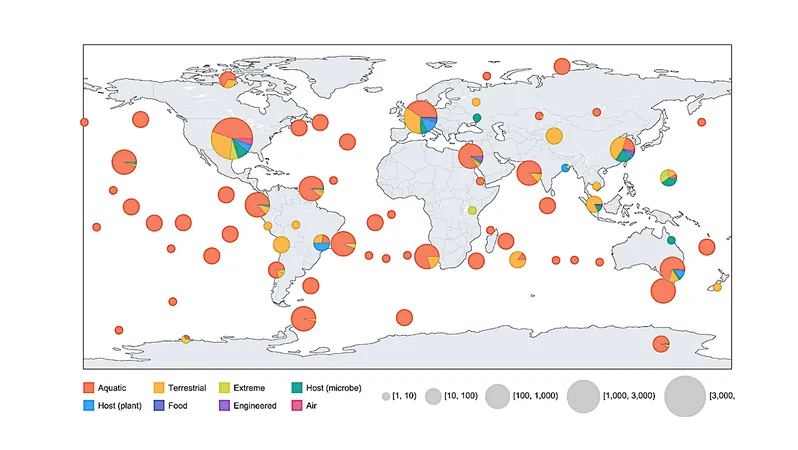
Revolutionary AI Uncovers Over 160,000 Previously Unknown Virus Species - A New Frontier in Virology!
2024-10-09
Author: Wei
Groundbreaking Study on RNA Viruses
In a groundbreaking study, artificial intelligence has revealed staggering details about a previously hidden world of viruses that coexists on our planet. A cutting-edge machine learning tool has identified an astonishing 161,979 new species of RNA viruses, significantly enhancing our understanding of Earth's biodiversity and opening doors to countless more virus species yet to be characterized.
This monumental research, published in the prestigious journal *Cell*, is credited with being the largest single discovery of virus species to date. Professor Edwards Holmes, a senior researcher from the University of Sydney's Faculty of Medicine and Health, expressed his excitement, stating, “We have been offered a window into an otherwise concealed aspect of life on Earth, demonstrating remarkable biodiversity.”
“This is the largest number of new virus species discovered in a single study, massively expanding our knowledge of the viruses that inhabit our world,” added Professor Holmes. “To uncover so many new viruses at once is mind-blowing. This discovery merely scratches the surface, hinting at the millions more awaiting discovery. We can even apply this approach to identifying bacteria and parasites.”
While RNA viruses are often linked to diseases affecting humans, the new findings reveal their presence in extreme environments like the atmosphere, hot springs, and hydrothermal vents, hinting at their essential roles in global ecosystems. Professor Holmes highlighted, “The fact that extreme environments host so many virus types is yet another testament to their astonishing diversity and resilience, shedding light on how these viruses and other elemental life forms evolved.”
How AI Transformed Virus Discovery
At the heart of this transformative study is an advanced deep learning algorithm named LucaProt. This AI tool was engineered to analyze vast amounts of genetic sequence data, including intricate virus genomes spanning up to 47,250 nucleotides. It sifted through existing public databases to classify this "dark matter" — sequences that had been recorded but remained largely unexplored due to their uniqueness.
“The majority of these viruses had already been sequenced, but their significant divergence led to their identities remaining mysteries,” Professor Holmes explained. “Our AI approach has organized and illuminated this previously obscure data for the first time.”
The deep learning model not only expedited virus identification but also demonstrated a significantly higher sensitivity and specificity compared to traditional bioinformatics methods. Co-author Professor Mang Shi from Sun Yat-sen University noted that this progress allows researchers to explore a much broader diversity of viruses than ever before. “We plan to utilize this model across various applications in virology and beyond,” he stated.
Moreover, Dr. Zhao-Rong Li from Alibaba Cloud Intelligence emphasized the pivotal role of AI in biological exploration, indicating that tools like LucaProt could revolutionize our understanding of biological sequences and systems.
Looking forward, Professor Holmes signaled a future brimming with possibilities, stating, “The next step is to refine our method to uncover even more of this remarkable diversity, and who knows what additional surprises await us.”
As researchers continue to deploy AI in virology, this major breakthrough not only promises to reshape our comprehension of viral ecosystems but could also lead to new approaches in tackling viral diseases, ultimately enriching both science and public health.
Conclusion
Stay tuned for updates, as the world of microbiology is set to expand in ways we never thought possible!


 Brasil (PT)
Brasil (PT)
 Canada (EN)
Canada (EN)
 Chile (ES)
Chile (ES)
 España (ES)
España (ES)
 France (FR)
France (FR)
 Hong Kong (EN)
Hong Kong (EN)
 Italia (IT)
Italia (IT)
 日本 (JA)
日本 (JA)
 Magyarország (HU)
Magyarország (HU)
 Norge (NO)
Norge (NO)
 Polska (PL)
Polska (PL)
 Schweiz (DE)
Schweiz (DE)
 Singapore (EN)
Singapore (EN)
 Sverige (SV)
Sverige (SV)
 Suomi (FI)
Suomi (FI)
 Türkiye (TR)
Türkiye (TR)